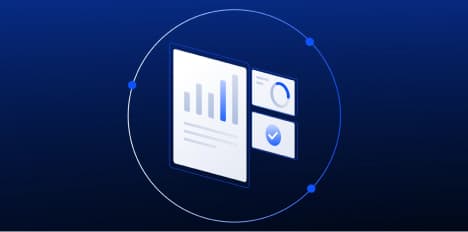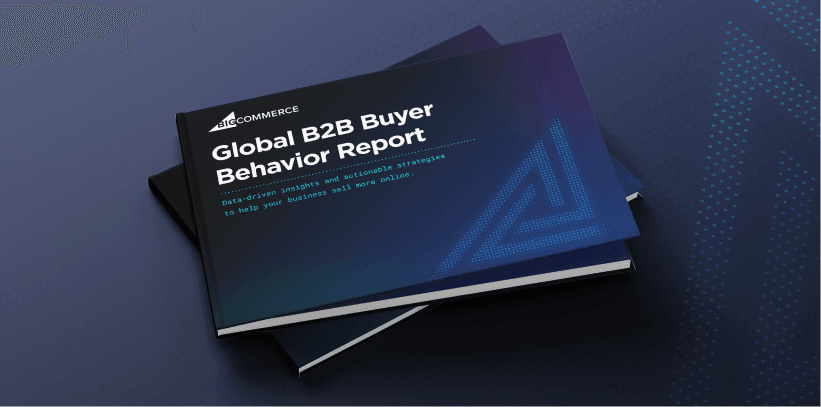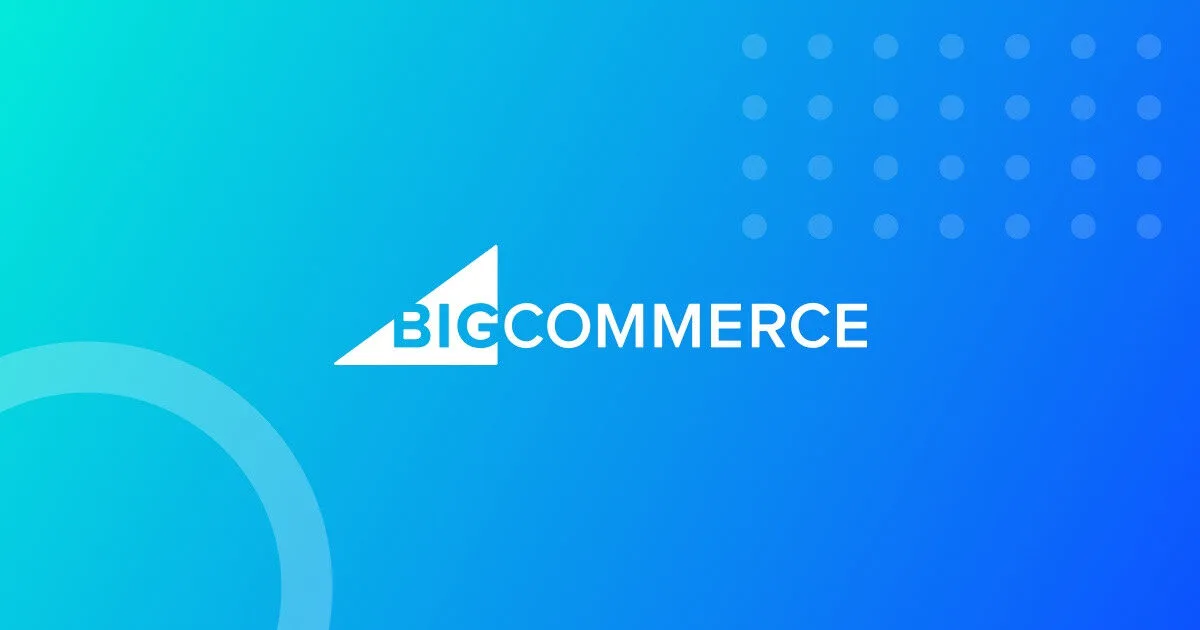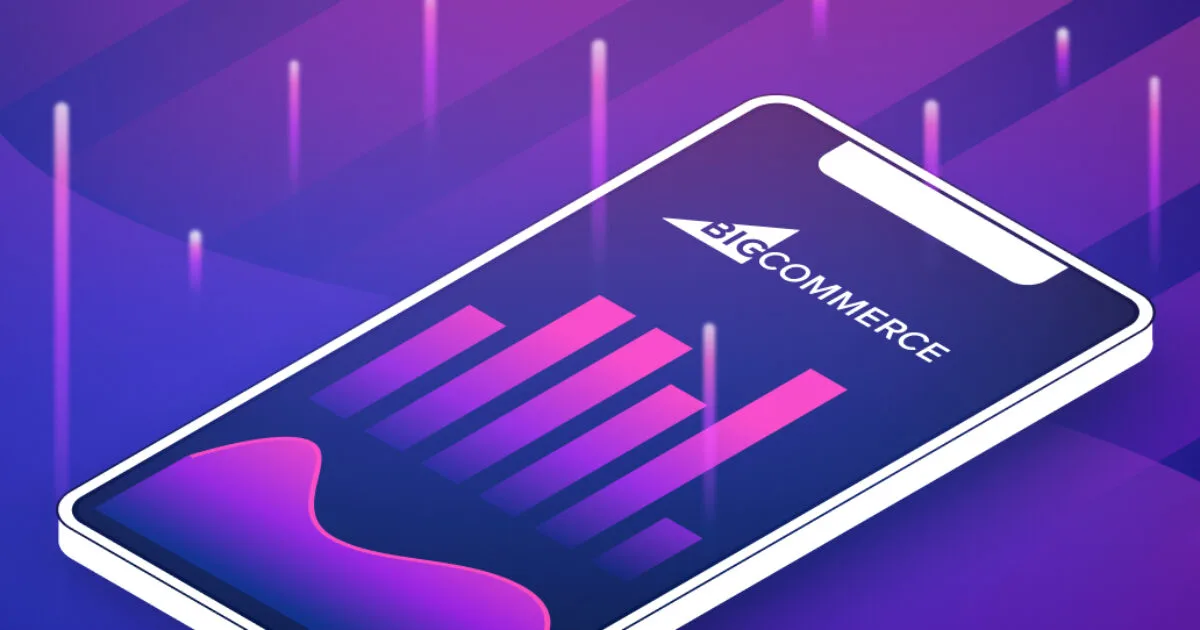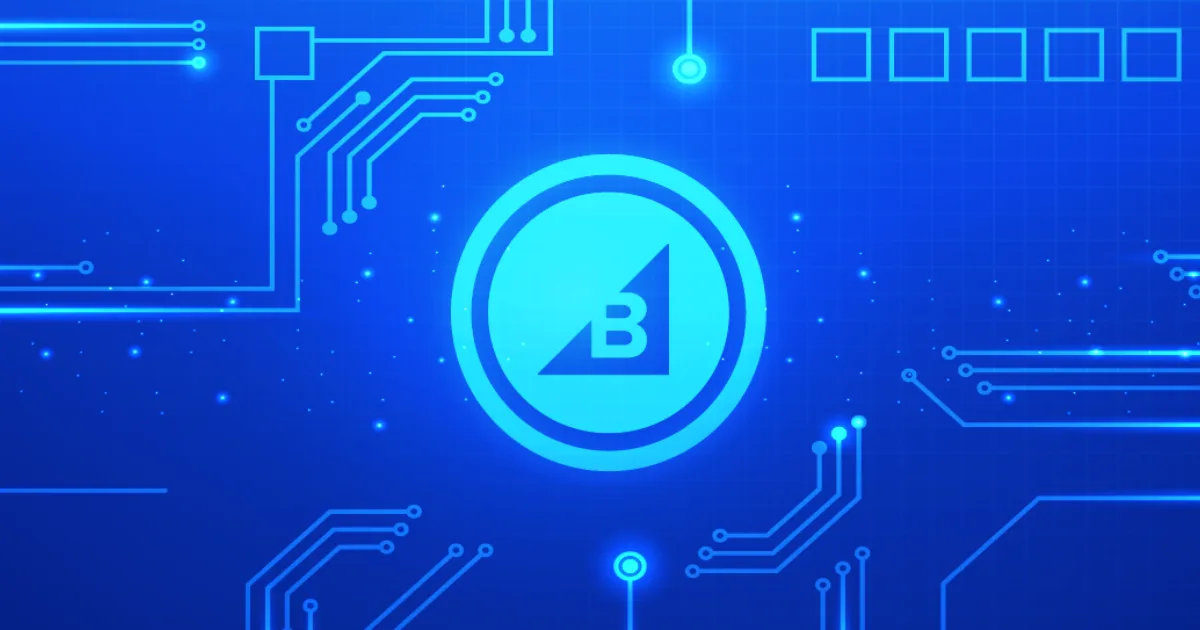by Annie Laukaitis
10/02/2025
With an estimated 27.2 million ecommerce sites worldwide as of 2024, it’s easy for an online store to get lost in the crowd.
The key to standing out? Exceptional ecommerce website development that not only enhances functionality and aesthetics but also optimises the online shopping experience. Ecommerce development involves refining the technical aspects of your website — how it functions, processes payments, responds to user actions, and its overall visual appeal.
Amidst a booming global web development market, which soared to $65.35 billion in 2023 and will hit $130.9 billion by 2032, there’s ample opportunity for businesses to innovate and thrive. Effective web development services empower business owners to create user-friendly websites that address and solve key ecommerce challenges, such as:
Determining the right features and functionality for your ecommerce project.
Understanding which ecommerce framework works best for you.
Integrating ecommerce into a current website or site template.
Ecommerce websites are vital for modern businesses looking to capture and convert the online market. BigCommerce stands out as a reliable and innovative platform, offering robust solutions for ecommerce website development.
In this article, we'll dive into everything you need to know about ecommerce website development to help you build a world-class online store.
What is ecommerce website development?
Ecommerce website development refers to the process of creating the technical structure of an online store. This involves setting up the frontend, which is what customers interact with when browsing products and making purchases, and the backend, which handles the data processing, order management, and integration with other systems like inventory or customer relationship management.
Key components of ecommerce development include:
Frontend development: The design and functionality users see and interact with, including the website's layout, graphics, product pages, and user interface.
Backend development: The server-side operations that process user actions, manage data, and ensure everything on the frontend works seamlessly.
Integrations: Linking the ecommerce platform with other software to extend capabilities, such as payment gateways, shipping providers, and analytics tools.
Ecommerce development is rapidly evolving with trends like headless commerce, where the frontend and backend operate independently, allowing for more flexibility and faster updates across multiple fronts like websites, apps, and other digital displays.
Additionally, AI-driven personalisation is now a game-changer, enabling online stores to tailor the shopping experience to individual preferences and behaviors, significantly enhancing customer satisfaction and loyalty.
Options for building an ecommerce website
Selecting the appropriate method for building your ecommerce website is crucial for ensuring scalability, enhancing the user experience, and maintaining cost efficiency. Here are three main options you might consider:
Build your website from scratch (open source).
Customise a SaaS (software-as-a-service) solution.
Harness the power of MACH architecture.
As we delve deeper into each of these options, we'll explore their benefits and challenges to help you make an informed decision that aligns with your business needs and goals.
Build it from scratch.
For businesses with a capable web development or IT team, opting for an open-source ecommerce platform might be the ideal choice. Open-source solutions allow full code modification, offering unparalleled customisation capabilities with virtually no limitations on how you construct your site.
However, managing an open-source platform means your business will handle all aspects of PCI compliance, web hosting, security, and manual updates. This can be particularly challenging as the complexity and scale of your operations increase.
Enterprises with unique needs, such as those requiring specific integrations or custom functionalities that off-the-shelf solutions can't provide, often benefit the most from building their websites from scratch. While open source provides the flexibility these large businesses need, it does demand significant ongoing investment in technical resources and infrastructure.
Customise a SaaS solution.
For those without extensive coding skills or the budget for a custom build, SaaS ecommerce platforms like Wix provide a user-friendly, cost-effective alternative.
SaaS is a subscription-based solution built and maintained by a third-party vendor and hosted in the cloud. Instead of building and developing a custom solution yourself, SaaS allows you to essentially rent the platform while the platform provider takes care of tasks such as product updates, security, hosting, PCI compliance, and everything else that comes with managing your own software. For this reason, SaaS solutions enable businesses to go to market quickly and affordably.
Some ecommerce solutions, referred to as “open SaaS,” even offer benefits from both open-source and SaaS platforms.
BigCommerce, for example, is one of the leading open SaaS ecommerce platforms for mid-market and enterprise brands. With our open APIs, customers receive all the benefits of a SaaS platform — being hosted on behalf of BigCommerce, a lower total cost of ownership, and faster go-to-market time. In addition, it offers the flexibility to create custom integrations and functionality faster, similar to using an open-source platform.
With BigCommerce’s freedom and flexibility, customers can take advantage of powerful tools like Catalyst — our new headless storefront — to create their dream ecommerce site. Designed with marketers and developers in mind, Catalyst enables anyone on your team to launch a new site and build a custom experience that captivates and converts. This tool merges BigCommerce’s out-of-the-box functionality with developer functionality, catering to businesses seeking both scalability and cost efficiency.
MACH (microservices, API-first, cloud-native, and headless).
For decades, the traditional ecommerce model has tied the frontend storefront and backend server-side into an all-in-one monolith setup.
While a monolith solution might be a smart choice for small and mid-sized (SMB) businesses with limited requirements, it can present some challenges as your business scales and requires greater complexity, such as launching multiple websites or expanding into new regions.
The solution? MACH architecture.
MACH (microservices, API-first, cloud-native SaaS, and headless) is a set of guiding principles using a best-of-breed approach to build enterprise software tech stacks. Unlike monolithic architecture, MACH allows you to choose the technology that best meets your business needs and future roadmap.
Microservices.
Microservices are small services that perform a specific task and come together to build an application. They are independently developed, updated, deployed, and managed — each using different code.
API-first.
APIs (application programming interface) are what make it possible to connect and communicate to deliver content between two or more applications or services — which means developers need to build the application with APIs at the forefront.
Cloud-native.
A cloud-native application leverages the full capabilities of the cloud and SaaS technology to manage, monitor, and maintain the technology and licence it through subscription services.
Headless.
Headless commerce architecture is the decoupling of the frontend presentation layer of a website from the backend ecommerce functionality. This allows for greater design flexibility when creating the user interface and integrating various channels.
Platforms like BigCommerce offer the power to create a headless store, effortlessly linking backend management to frontend delivery. This setup gives businesses the freedom to launch innovative commerce strategies without being held back by a modular framework.
Monolith vs. MACH: A MACH Commerce Guide
Learn more about MACH and see if it’s right for you.
Choosing the right ecommerce website developer.
Choosing the right ecommerce developer is crucial because they play a pivotal role in crafting a seamless shopping experience that not only drives sales but also fosters customer loyalty. Their expertise ensures that your online store functions smoothly, looks great, and meets the evolving expectations of modern shoppers.
According to a survey conducted by HostingAdvice, 75% of consumers reported they had chosen not to make an online purchase because the website appeared outdated or unprofessional, while 92% reported greater confidence in products or services when the business's website operated smoothly.
The best way to ensure your ecommerce web development team provides a better customer experience on your site is by hiring one with experience designing and developing for ecommerce.
With any luck (or if, like BigCommerce, your platform has a strong partner programme), you can find ecommerce website development services that are familiar with the latest in ecommerce best practises and can produce a site that will delight your customers and boost your conversion rate.
Understand different developers’ strengths.
Some developers are great at bringing your brand to life through a beautifully designed frontend, while others excel in backend customisation and technical implementation.
When you evaluate developers for your online store, ensure you know their strengths.
While some developers will be capable of both backend development and frontend design, they usually pick one as their primary focus. Make sure that the developer you choose has skills aligned with your needs.
Here are some of the top elements to consider when developing your ecommerce website:
PCI compliance and web security.
SEO (search engine optimisation).
Multiple payment options and gateways.
CMS (content management system) integration.
Mobile-responsiveness.
Shopping cart design.
Product filtering.
Base your choice off your needs.
Don’t select a developer or development company until you have a clear understanding of your ecommerce storefront's needs and the specific skills required to achieve your objectives. For instance, if your ecommerce platform has an open-source framework, you'll need a strong backend developer, but don't overlook the importance of design capabilities — you'll need expertise in both areas.
If you use a SaaS platform, your needs might lean more towards frontend development, though having someone skilled in building APIs can be crucial. While most SaaS platforms offer a range of pre-built integrations, an expert should handle more complex requirements.
To ensure you choose the right developer, evaluate their portfolios to see their past work, understand the technology stacks they are proficient in, and confirm that their skills align with your business goals. These will help you find a partner who can effectively bring your ecommerce vision to life.
Functionality to consider when developing an ecommerce website
Different features and functionality you may want in your ecommerce site will vary based on your business model and unique needs.
Based on your goals, create a list of features your ecommerce website needs. These should closely align with your customer lifecycle.
For example, a startup or small business may not need to support multiple currencies, but this could be a crucial feature for a cross-border retailer.
An easy way to determine what shopping cart features you need is to work from general to specific.
List all the general must-haves, such as preferred payment gateways or marketplace integrations.
Add extras that your business needs, like automatic sales tax and shipping rate calculation.
Prioritise all the nice-to-haves from 1 to 5, with 1 being a crucial feature for driving revenues and 5 as a handy add-on that could make your day-to-day operations more efficient.
Responsive design.
According to Statista, mobile transactions will account for almost 50% of US ecommerce sales by 2027. This underscores the importance of a mobile-first design approach as more customers use these devices to shop online.
Implementing responsive, mobile-friendly web design or developing a dedicated mobile app ensures that customers enjoy a consistent and seamless shopping experience, whether they access your site from a desktop or a mobile device.
To support this, the BigCommerce theme marketplace provides a variety of both free and premium mobile-friendly themes. These themes are optimised to cater to diverse product catalogues and industries, ensuring your online store is mobile-ready and equipped to meet modern shopping habits.
SEO capabilities.
SEO is a key distribution strategy for your content and an essential aspect of your website design.
Ranking highly on the Google search engine for relevant keywords can help drive traffic to your site from interested users searching online. SEO can organically deliver you potential clients with high intent who are more likely to convert, which can make SEO traffic more cost-effective.
Platforms like BigCommerce offer SEO-friendly features, such as customisable URLs and metadata, which help improve your site's visibility and search engine ranking. These features allow you to tailor your web pages to better match specific search queries, thereby boosting your chances of appearing at the top of search results.
Site speed.
Site speed is critical for an ecommerce site, influencing SEO, user experience, and conversion rates. Fast-loading sites are particularly favored in SEO since Google uses site speed as a significant ranking factor.
To guarantee that your ecommerce store operates at peak performance, selecting skilled developers who specialise in optimising site speed is crucial. BigCommerce stands out in this arena. It offers robust hosting solutions and performance optimisations, ensuring your site loads swiftly and smoothly. This enhancement not only improves user satisfaction and retention but also boosts your site’s visibility in search engine results, attracting more potential customers.
Content management system.
A content management system (CMS) is crucial for an ecommerce site, as it houses any dynamic content — such as blog posts, visuals, and any other blocks of content in a design — all in one place.
With a CMS, you can change or add new content, which will automatically reflect on your ecommerce website. This way, you can consistently update your site with new content supporting your products.
Product management.
Picture your favourite online retailer.
Chances are they consistently have the products you want in stock, provide multiple versions of products, and offer promotions and discounts when needed.
As you’re developing your ecommerce site, make sure it has the functionality necessary to add, edit, and keep track of inventory so that you can consistently give customers the products they want.
Payments and checkout.
In the age of Apple Pay, PayPal, and mobile wallets, it’s no longer acceptable for ecommerce businesses to offer only one payment option.
In fact, research shows that flexible and seamless payment options speed up the decision-making process for nine in 10 shoppers and even prompt them to spend more. This makes it crucial for your ecommerce platform to integrate with multiple payment gateways.
Luckily, as a BigCommerce merchant, you can build a custom checkout for your online shop and even offer one-click checkout with apps like Bolt.
Security.
Developing an online store means dealing with sensitive data, such as customer phone numbers, credit card numbers and other payment information — which means it’s your responsibility to handle it with care.
To accept payments, your online store should meet PCI compliance standards. Otherwise, you may receive fines and lose the ability to accept payments. This could also result in a loss of customer confidence and other fraud-related financial consequences.
Some platforms come with an SSL certificate. However, this may not be enough. Proper protection may mean third-party software or an additional investment in in-house infrastructure. It's important to investigate the level of security your platform provides to determine if you need to put additional measures in place.
Luckily, BigCommerce stores come standard with Level 1 PCI compliance to make your site safe and secure. This way, you can spend your time building your business instead of worrying about security.
Integrations.
No ecommerce platform will come with every single feature you want natively. You’ll need to make sure your platform enables you to customise your site by offering plugins and integrations with solutions that you need.
How do you want your back office to run? Many businesses prioritise connecting their ecommerce solution to existing ERP, OMS, PIM, or CRM systems, so make sure the integration you need is available with the platform you choose.
What kinds of digital marketing do you rely on? If you want to deliver a personalised experience, you may want to use a customer data platform. Dig into what you can do with your data to know what’s possible with each ecommerce software.
Can you integrate your data with your email marketing system? You may also want to consider things like on-site chat or SMS marketing, and if you need to integrate with marketplaces, like eBay, like Amazon or with social media channels.
Marketing strategy.
Developing your ecommerce marketing strategy early in the process is crucial as it helps define your site's structure and identify necessary features.
For instance, if social media advertising is a key component of your strategy, consider integrating social sharing options on your website to enhance user engagement. If mobile commerce is a significant part of your strategy, adding push notifications or developing a mobile app could be beneficial. Additionally, consistently using your domain name in marketing materials can strengthen brand recognition and increase traffic to your site.
6 steps for developing a custom ecommerce website
It's not necessary — or even recommended — to build your ecommerce website from scratch. There are many platforms that can help you create an ecommerce store with minimal coding or technical skill required on your part.
However, determining your platform isn’t the only thing you need to do before starting the development process. Here are some things to consider before diving in.
1. Understand your business goals.
The decision to sell online is a big one. And you can’t proceed with action until you figure out the operational bells and whistles.
To do that, start with the why.
Why do you want to sell online? To attract more business — that’s easy. But how exactly do you plan to make that happen?
Will you use your ecommerce business as an avenue for direct-to-consumer sales?
Do you want to drive online traffic to supplement brick-and-mortar operations?
Do you want to expand a B2C business to B2B or vice versa?
Apart from your baseline goals, think in terms of ecommerce metrics.
What kind of growth would you like to see post-launch, and how will you measure it? For example, what’s your goal in terms of weekly online sales volume?
Do you plan to sell locally or internationally, too?
What’s your plan for growing a customer’s lifetime value?
How many products do you plan to sell?
2. Understand the intended shopping experience.
What kind of online shopping experience do you want to give your customers? Some of the experiential features you may want to consider include:
Enabling your customers to filter search results by size, colour, or price with the click of a button.
The ability to compare products side-by-side.
Offering an optimised, one-page checkout experience.
Promotions, discounts, and other types of offers.
Consider whether your target audience wants a simple and quick shopping experience — as they might with necessities like some consumer-packaged goods — or if they’ll take time to browse your site and discover new products. You’ll likely want to structure your site for a different customer journey, depending on your answer.
3. Discuss platform options.
There are advantages and disadvantages to the different ecommerce platforms, which is why you need to know exactly which features will make your online business the best it can be.
Some of the most popular ecommerce website builders include BigCommerce, Magento, WooCommerce, and Shopify or Shopify Plus. Some merchants with content-heavy sites may like to use WordPress — and several ecommerce platforms, including BigCommerce, offer integrations so you can combine your content and commerce.
4. Add products.
Make sure it’s easy for you to add and edit product listings, and that your inventory can sync across all of your sales channels. This can simplify back-office operations and help you avoid overselling your products.
When you do add products, you’ll want to focus on these things:
High-quality product images: Give your customers the confidence that if they order from you, they’ll receive exactly what they expect.
Detailed product descriptions: Particularly for highly researched products, make sure that you include all pertinent information, like product specs and sizing information.
5. Set payment and shipping settings.
A website developer can assist in the shopping cart and checkout process, as well as how to integrate payment gateways into your site and get shipping set up. You’ll typically have many payment gateways to choose from.
You don’t have to integrate them all, but customers are increasingly interested in paying via different payment methods like Buy Now, Pay Later (BNPL). Plus, if you’re selling cross-border, you’ll want to choose payment gateways that support your target regions.
BigCommerce offers versatile payment and shipping integrations that suit diverse business models. This flexibility allows you to choose payment gateways that cater to your target regions, enhancing the checkout experience and meeting the varied needs of your customers.
6. QA and launch website.
Once you move your website from stage to production, give it a quick test drive to ensure that you’re all set in terms of ecommerce website design, performance, and navigation.
Here’s a quick checklist:
Review all calls-to-action and form titles on the homepage and landing pages.
Test your checkout experience.
Double-check payment processing integrations (credit cards, PayPal, Stripe, etc).
Make sure that all images are high-definition but optimised for load speed.
Look for missing product categories and descriptions.
Check that all links and forms are functional.
Verify that your tax settings are correct.
Ensure you properly list all the inventory.
Test your coupons and promo codes.
Also, ensure your digital storefront displays equally well on desktop and mobile and that the user experience is consistent throughout.
How BigCommerce simplifies ecommerce development
BigCommerce offers ecommerce brands the best of both worlds with its robust out-of-the-box tools and extensive customisation options, simplifying website development. Discover some of the platform's many features that empower business owners to seamlessly create their ideal online store.
Powerful APIs for customisation.
BigCommerce’s robust API capabilities empower businesses to tailor their ecommerce sites with precision. With the freedom to integrate outside technology, you can add tools like custom shipping calculators that adjust rates based on various factors or integrate unique payment methods that appeal to a broader audience.
These customisations not only improve the shopping experience for customers but also streamline operations, making it easier for businesses to manage complex requirements seamlessly.
Robust security and scalability.
BigCommerce is committed to providing a secure and scalable ecommerce platform. Ensuring PCI compliance is a cornerstone of the tool’s security strategy, meaning that all transactions meet the strict security standards required for credit card processing. Additionally, BigCommerce incorporates advanced fraud protection measures to safeguard both customers and shoppers from potential security threats.
This focus on security does not compromise scalability. The platform is designed to grow with your business, easily handling increases in traffic and transactions without compromising performance. Whether you're a small startup or a large enterprise, BigCommerce provides the stability and security you need to expand confidently.
Optimised for search.
BigCommerce offers built-in SEO tools designed to boost search engine visibility. These tools include customisable URLs, meta titles, and descriptions, helping your site rank higher. It also automates sitemap generation and robots.txt management, facilitating smoother indexing by search engines.
Additionally, BigCommerce offers templates that are optimised for mobile, aligning with Google’s mobile-first indexing. This is crucial, considering Statista reports that mobile transactions will account for nearly 50% of US ecommerce sales by 2027. This mobile optimisation not only caters to user preferences but also significantly boosts search rankings, ensuring your site remains competitive and visible.
Top-of-the-line site performance.
BigCommerce delivers exceptional site performance with robust hosting solutions and a global Content Delivery Network (CDN), ensuring quick page load times that enhance user engagement and SEO. The platform is renowned for its high uptime percentages, which minimise disruptions and maintain continuous availability. This is especially crucial during peak traffic periods. BigCommerce’s reliable performance not only reduces cart abandonment but also bolsters customer trust by providing a consistently smooth and responsive shopping experience.
Seamless integrations.
BigCommerce excels in seamlessly integrating with key business tools such as CRMs, ERP systems, and marketing automation platforms. These integrations simplify workflows and enhance efficiency across various business operations.
For instance, linking a CRM with BigCommerce can automate the sharing of customer data across sales, service, and marketing teams, enhancing coordination and customer insights. Similarly, ERP integrations streamline inventory management and financial processes, while marketing automation connections enable personalised campaigns based on customer behaviour and purchase history.
These robust integrations help businesses improve operational efficiency and deliver more targeted, effective customer interactions.
The final word
Launching an ecommerce business involves navigating varying levels of complexity, and the choice of platform can greatly influence your journey. Whether you start with a sophisticated custom setup or a simpler turn-key solution, understanding the pivotal role of web developers in both launching and maintaining your site is crucial. Now that you know the essential functionalities and steps needed before going live, you're all set to dive in.
If you find yourself needing a bit of extra help along the way, remember that BigCommerce has a robust network of service and solution experts ready to lend a hand and answer your questions. With this support, you can confidently launch and grow your online store.

